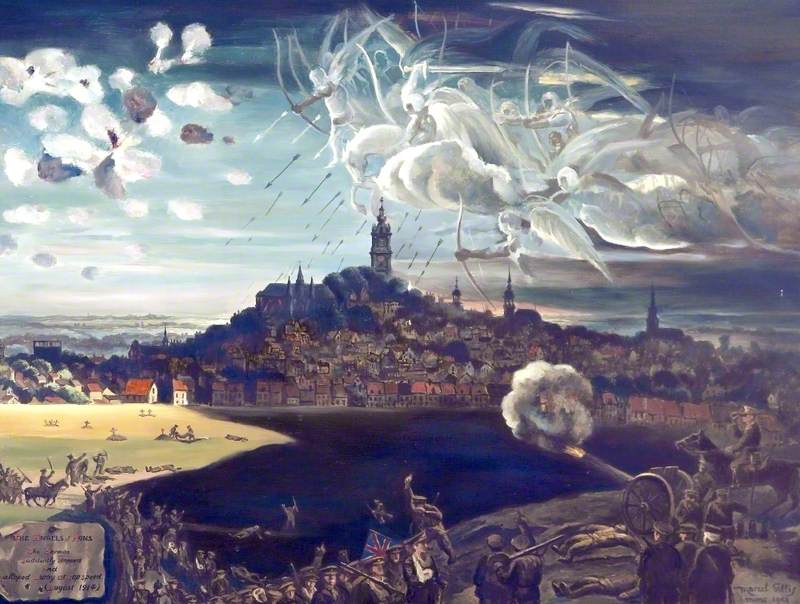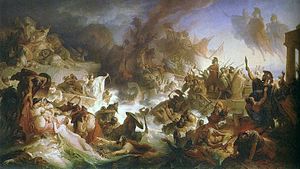
If we accept the common dating of Josephus’s account of the Jewish War, around 75 CE, then consider what this means for the historicity of the following events. Apply the reasoning of those who argue for the historicity of New Testament miracles. Josephus declares he is recording events no more than ten years earlier and he speaks of eyewitnesses.
First a star stood over the City, very like a broadsword, and a comet that remained a whole year.
Then before the revolt and the movement to war, while the people were assembling for the Feast of Unleavened Bread, on the 8th of Xanthicos at three in the morning so bright a light shone round the Altar and the Sanctuary that it might have been midday. This lasted half an hour. The inexperienced took it for a good omen, but the sacred scribes at once gave an interpretation which the event proved right.
During the same feast a cow brought by someone to be sacrificed gave birth to a lamb in the middle of the Temple courts,
while at midnight it was observed that the East Gate of the Inner Sanctuary had opened of its own accord – a gate made of bronze and so solid that every evening twenty strong men were required to shut it, fastened with iron-bound bars and secured by bolts which were lowered a long way into a threshold fashioned from a single slab of stone. The temple-guards ran with the news to the Captain, who came up and by a great effort managed to shut it. This like the other seemed to the laity to be the best of omens . . . .
A few days after the Feast, on the 21st of Artemisios, a supernatural apparition was seen, too amazing to be believed. What I have to relate would, I suppose, have been dismissed as an invention had it not been vouched for by eyewitnesses and followed by disasters that bore out the signs. Before sunset there were seen in the sky over the whole country, chariots and regiments in arms speeding through the clouds and encircling the towns.
Again, at the Feast of Pentecost, when the priests had gone into the Inner Temple at night to perform the usual ceremonies, they declared that they were aware, first of a violent movement and a loud crash, then of a concerted cry: ‘Let us go hence.’
(Josephus, Jewish War, 6)
A star “over a city” is as nonsensical to us as a star positioned over the house where Jesus was found. And comets do not stay around for a full year. But how could Josephus get away with writing such things within ten years of them supposedly happening unless they were true and could not be contradicted by eyewitnesses, both Roman and Jewish?
Josephus further tells us that priests saw and interpreted the signs and priests would hardly lie. They were, after all, attempting to tell the masses that what they had seen should be interpreted as a sign from God carrying a different message.
If the cow giving birth to a lamb had been said to have happened in a cowshed or behind an outhouse then we could dismiss it easily enough. But how could Josephus expect to get away with saying it happened right in the middle of the Temple courts? Surely there were scores of eyewitnesses.
As for the appearance of angelic armies in the sky being confirmed by eyewitnesses, we can well believe it. We know the same type of event was recorded but a mere month after the battle at Mons in 1914: see the Angels of Mons.


